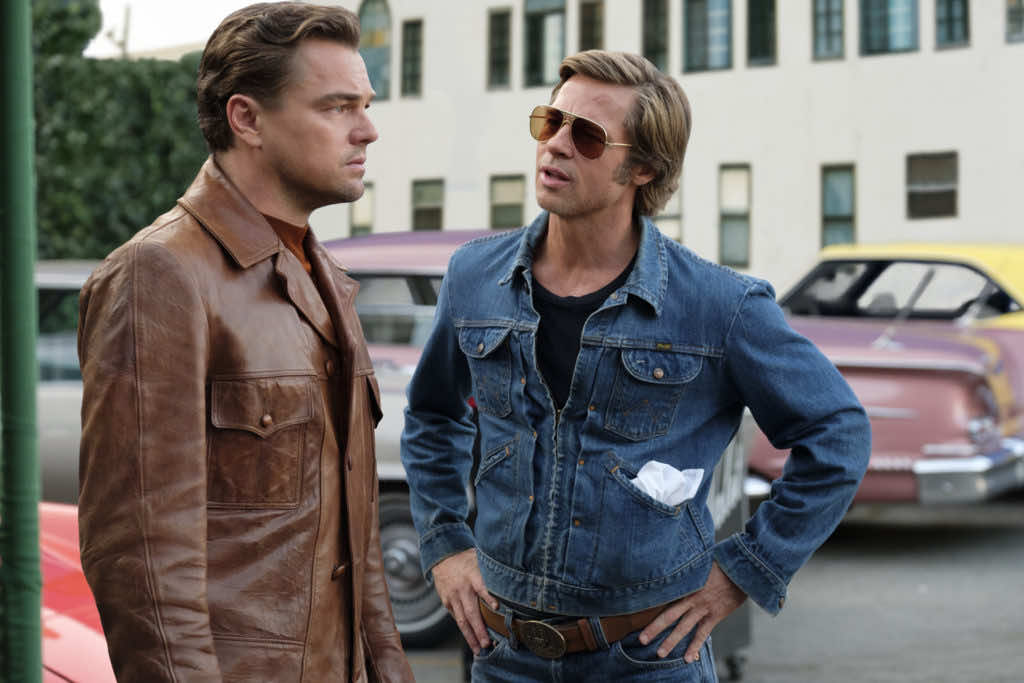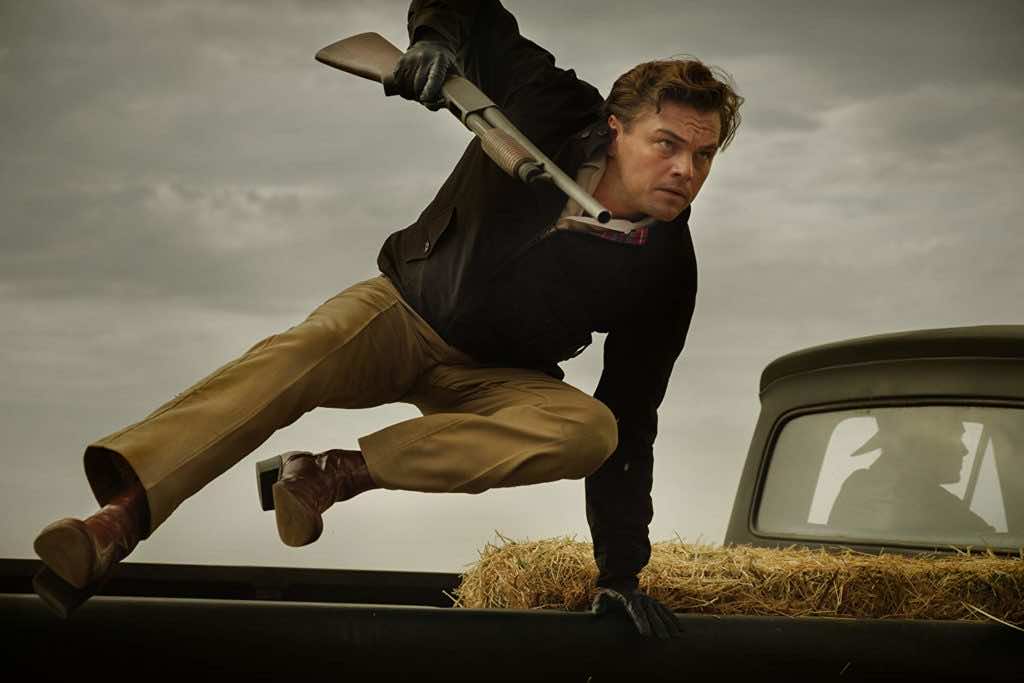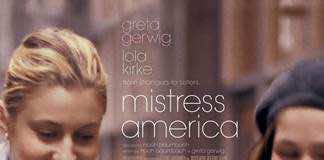
For his second to last film before he retires writer-director Quentin Tarantino reveals a lighter, sentimental touch for nostalgia. It’s a shame that Once Upon a Time … In Hollywood still falls short of heartfelt by adding a coda of mean-spirited, juvenile violence that has also become his signature. This is also the sort of thing that has endeared him to many followers who will be writhing in their seats for two hours to get to the “good part.” In so doing they might miss the soulful yearnings for relevance by an aging Western star named Rick Dalton (Leonardo DiCaprio) and his devoted stunt double Cliff (Brad Pitt), who provides the unconditional moral support that Rick hardly acknowledges. Due credit to Tarantino’s script and the talents of his leads: it’s a rather sweet relationship between two men described at one point as like a marriage minus the sex.
Once Upon a Time … In Hollywood takes place in 1969, on the eve of the end of the flower power era. It’s well known in pop culture that the movement was co-opted by a madman named Charles Manson and his “family” of hippies turned killers. The Manson story runs parallel to that of Rick and Cliff, who are just trying to survive the waning of another era: the Hollywood-produced Westerns that flooded network TV so thoroughly that the brightness of its handsome stars outshone each other. Media saturation has turned to apathy and Rick and Cliff have been tossed aside by fickle consumerist culture. The escapism of the Western hero has become irrelevant as darker times loom, particularly depicted in radio news reports of the Vietnam War, sandwiched between commercial jingles and pop music. That Manson (played by Damon Herriman in a brief, yet chilling scene) and his family find a place to squat on an old Western TV show set is no irony. Living next door to Rick’s Hollywood Hills mansion is actress Sharon Tate (Margot Robbie), the most historically famous of the Manson Family’s victims.

Tarantino takes a leisurely pace to develop his characters and allows scenes to unfold much like the TV shows and movies of the era before MTV introduced a more kinetic pattern for editing together entertainment. The scenes are drawn out and don’t always have the usual impact of Tarantino’s smart-aleck writing. There’s something more heartfelt going on, however. A particularly moving moment comes when a child actor (Julia Butters) becomes a reality check for Rick that his line of work is not very kind to aging actors. With his penultimate film, Tarantino lashes out in a quiet way against trend-chasing Hollywood (currently seemingly monopolized by Disney with its formulaic movie-making and thirst for sequels or remakes — a reference that the director doesn’t allow escape him in this scene).
This painstakingly constructed argument against the reality of the business simultaneously celebrates it. This also includes a rather intense visit to the Manson ranch by Cliff, where comedy and tension meet its height during the movie. There’s also a quieter but no less charming scene where Tate finds her bliss alone, listening to the crowd’s reaction during a screening of The Wrecking Crew.

The affection Tarantino has for Hollywood is also delicately handled in establishing shots or montage sequences. Just consider how cinematographer Robert Richardson shoots neon signs in the film. It would be too easy to amp up their glow and fetishsize their representation for La-La Land. However, the metal and paint that supplements their glow as either framing the glass tubes of glowing gas or adding to their words is earthy and imperfect.
For all of Once Upon a Time … In Hollywood‘s place in the “Dream Factory” there’s an awareness for its limits of relevance. In a way, the bloodbath that arrives at the end is a weak attempt of returning to it and a bit of a cop out. After the surprise historical twist in Inglourious Basterds (2009) Tarantino once again pulls a similar stunt. It’s kind of sad to note that the “surprise” deflates the heart of the film with its overly aggressive gore and cruelty played for laughs. But at least the film is not the drawn out misanthropy of his previous film (The Hateful Eight is just a tiresome exercise in drawing out mean caricatures of annoying people — a film review). Still, the stunt feels like a gimmick in its repetitive echoes. Here’s to hoping for something more attuned to the heart of Once Upon a Time … In Hollywood’s character exploration capping Tarantino’s career in filmmaking, whenever that may be.
Once Upon a Time … in Hollywood runs 161 minutes and is rated R.
Special screening update: the Coral Gables Art Cinema will host a theatrical run of this movie beginning Friday, Aug. 30. Visit this link for tickets.
It opens in previews Thursday, July 25 and then wide the following Friday. For theaters in your location visit this link. Sony Pictures invited us to a preview screening for the purpose of this review.










5 star movie!